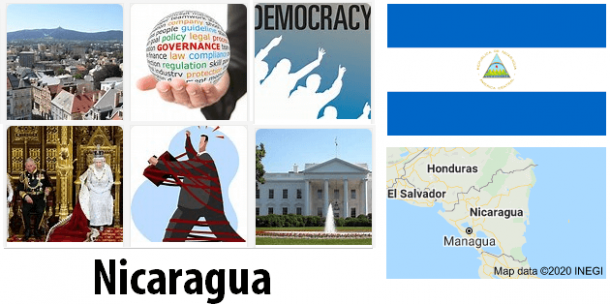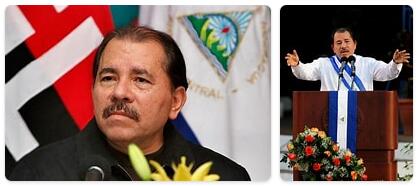Nicaragua Government and Politics
Following the 1987 Constitution, most recently amended in 2000, Nicaragua is a unified state, democratic republic. The supreme executive is added to the head of state, the president, who is also the head of government and military commander.

The president is elected (from 1995) for five years in direct elections, possibly with two rounds of elections if no candidate gets more than 35 percent of the vote and at least 5 percent more than the next candidate in the first place. The president could not be re-elected immediately until 2009, when the Supreme Court reversed the legislative text so that the incumbent president and its meanings of re-election. In 2014, the National Assembly removed all restrictions on re-election and made it legal for the president to run for election for an unlimited number of five-year terms.
Legislative authority has been added to the National Assembly, consisting of 90 members elected in general elections according to the principle of proportionality, plus up to two other members: the previous president and the losing presidential candidate with the most votes. The assembly is elected for five years. The Assembly’s resolution can be stopped, in whole or in part, by a presidential vote, if this is abolished within 15 days.
Administratively
Administratively, the country is divided into 15 ministries and two autonomous regions. There are also elected local government bodies at the local level, while the local areas were previously state-controlled. The two autonomous regions are located on the Atlantic coast, where a large proportion of the inhabitants are American Indigenous people.
Judiciary
The judiciary includes, among other things, a Supreme Court, appeals courts and a number of first instance courts. Supreme Court judges are appointed by the National Assembly. The Supreme Court administers the judiciary.
Nicaragua’s defense
Nicaragua has volunteered military service with 18 to 36 months of service. The total force numbers for Nicaragua’s armed forces are around 12,000 active personnel (2018, IISS). The material of the forces is largely outdated, and the Air Force has no fighter aircraft.
Army
The army has a strength of about 10,000 active personnel. Materials include 82 tanks (62 T-55 and 20 T-72), 20 clearing wagons, about 17 storm tanks, about 90 armored personnel vehicles and 12 armored fighters. In addition, the army has medium-heavy artillery.
Air Force
The Air Force has a force of 1,200 active personnel, nine light transport aircraft, two training aircraft, and nine helicopters. In addition, the Air Force has anti-aircraft artillery.
The Navy
The Navy has a force of about 800 active personnel, and eight patrol vessels.

The long dictatorship of General Anastasio Somoza, which lasted twenty years, had only one brief interruption, from 1947 to 1950, during which the presidency of the Republic was entrusted to a relative of his, the former Minister of Foreign Affairs Victor Román y Reyes. After he died in 1950, Somoza was re-elected (May 21) for another six years. On October 14, 1951, Nicaragua joined the Organization of Central American States. However, relations with the neighboring republics of Costa Rica and Guatemala were always tense and required the intervention of the OAS to avoid an armed conflict (11 January 1955). In particular, Somoza and the president of Costa Rica were always divided by differences due to irreconcilable political conceptions. Nicaragua was the first state of Central America to sign a military pact with the USA, which often showed their sympathy with the Somoza regime which constituted, with Batista in Cuba and Trujillo in the Dominican Republic, an anti-communist front. However, the Somoza dictatorship could not prevent the opposition, represented by conservatives and dissident liberals, from expressing its discontent and, starting in 1954, a violent campaign to overthrow the dictator began. On September 21, 1956, Somoza was the victim of an attack and died eight days later in a hospital in Panama. Thus ended a period in which the conditions of the people did not know the way to effective progress despite some economic development and some improvements in health, education and transport. The Somoza dictatorship did not admit any of the democratic freedoms. Furthermore, he was accused of having accumulated, during his twenty years of government, one of the greatest personal fortunes of the whole continent, a significant fact if one considers the economic and demographic limits of the country.
The Congress of the Nicaragua entrusted the office of president (September 29) to the son of the assassinated general, Luis Somoza, who was then elected (February 3, 1957) by popular vote for another six years. The new president promoted a constitutional reform (April 15, 1958) which aimed to make the outgoing president and the members of his family ineligible but, following the intensification of the opposition, he decreed the suspension of constitutional guarantees and the law Martial.
The Nicaragua together with four other states of Central America, Guatemala, El Salvador, Honduras and Costa Rica, created, on February 24, 1957, a free trade zone, that is, a regional market of 9 million people.

